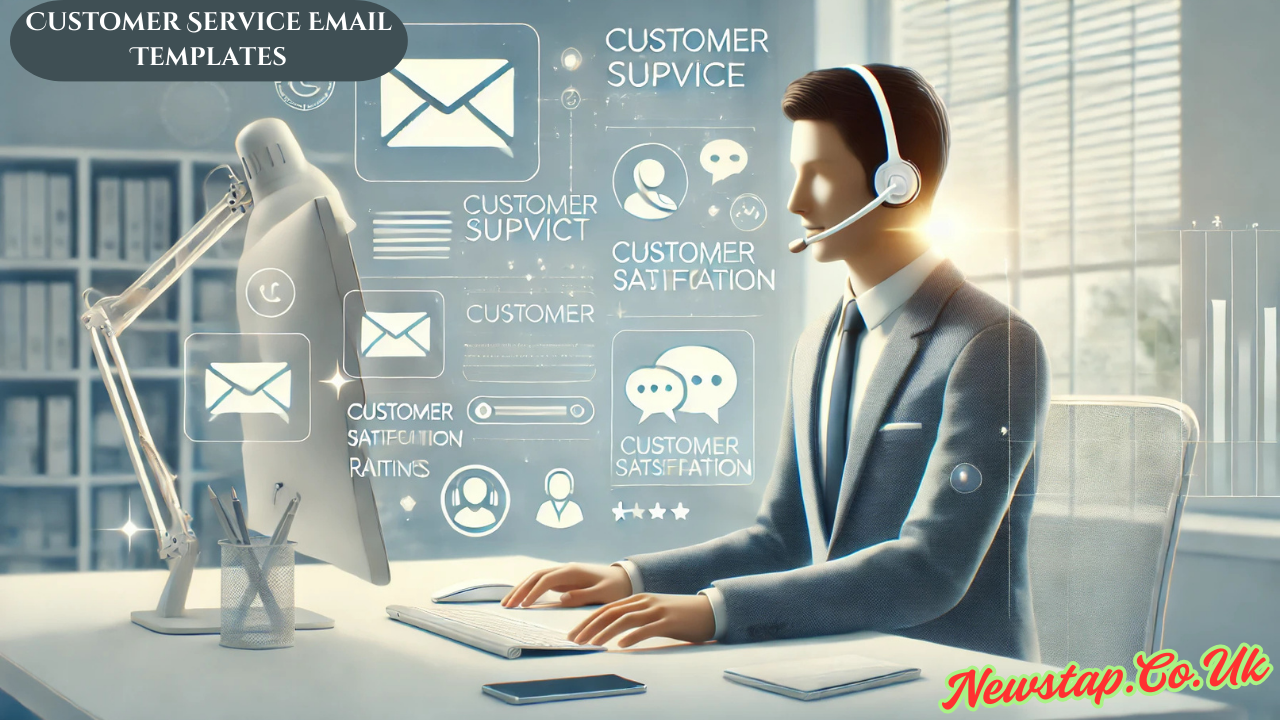Introduction
In today’s fast-paced business environment, effective communication is essential for maintaining strong customer relationships. Customer service email templates play a crucial role in ensuring consistency, professionalism, and efficiency in customer interactions. These templates save time, enhance the customer experience, and help businesses maintain a uniform tone in all communications.
By using customer service email templates, businesses can respond quickly to inquiries, complaints, feedback, and other common customer concerns. In this comprehensive guide, we’ll explore why email templates are essential, how to craft effective ones and provide examples for different customer service situations.
Why Are Customer Service Email Templates Important?
Customer service email templates offer several benefits, making them an indispensable tool for businesses of all sizes. Here are some key reasons why they matter:
- Consistency and Professionalism
- A well-structured email template ensures that every customer receives a consistent response, maintaining a professional tone.
- This consistency builds trust and reinforces the brand’s reputation.
- Time-Saving and Efficiency
- Customer service teams handle multiple inquiries daily. Using pre-written templates significantly reduces response time.
- Agents can focus more on resolving issues rather than composing responses from scratch.
- Error Reduction and Clarity
- Pre-designed templates reduce the chances of spelling or grammatical mistakes.
- They also ensure that crucial information is not omitted.
- Personalization and Customization
- While templates provide structure, they also allow for personalization by addressing the customer’s name, order details, or specific concerns.
- This makes interactions feel more human and less robotic.
Best Practices for Creating Customer Service Email Templates
To ensure that customer service email templates are effective, businesses should follow these best practices:
1. Personalize the Response
- Always use the customer’s name and reference their issue specifically.
- Avoid generic responses that seem automated or impersonal.
2. Keep It Clear and Concise
- Use simple and professional language.
- Get to the point quickly while ensuring all necessary details are included.
3. Be Empathetic and Courteous
- Show understanding and appreciation for the customer’s concern.
- Use polite and professional language, such as “Thank you for reaching out” or “We sincerely apologize.”
4. Provide Clear Solutions
- Make sure the email includes actionable steps for the customer.
- If the issue is unresolved, provide an estimated resolution time.
5. Include a Friendly Closing
- End the email on a positive note, such as “We appreciate your patience” or “We look forward to assisting you further.”
Common Customer Service Email Templates
Here are some useful customer service email templates for different situations:
1. Acknowledging a Customer Inquiry
Subject: Thank You for Contacting [Company Name]
Dear [Customer Name],
Thank you for reaching out to [Company Name]. We have received your inquiry regarding [brief description of the issue]. Our team is currently reviewing your request, and we will get back to you within [time frame].
In the meantime, feel free to check our Help Center for possible solutions: [Help Center Link].
Best regards,
[Your Name]
[Company Name]
2. Responding to a Customer Complaint
Subject: Apologies for the Inconvenience – We’re Here to Help
Dear [Customer Name],
We sincerely apologize for the inconvenience you’ve experienced with [specific issue]. We understand how frustrating this must be and truly appreciate your patience.
Our team is actively working on resolving this, and we expect to have it fixed by [estimated time frame]. Please rest assured that we are committed to providing the best service possible.
If you have any further questions, feel free to reply to this email.
Best regards,
[Your Name]
[Company Name]
3. Requesting Customer Feedback
Subject: Your Feedback Matters to Us!
Dear [Customer Name],
Thank you for choosing [Company Name]. We hope you had a great experience with our service. We’d love to hear your thoughts and suggestions.
Please take a moment to share your feedback by completing our short survey: [Survey Link]. Your insights help us improve and serve you better.
Thank you for your time!
Best regards,
[Your Name]
[Company Name]
4. Notifying Customers of a Service Interruption
Subject: Important Update: Temporary Service Interruption
Dear [Customer Name],
We want to inform you about a scheduled maintenance on [date] from [start time] to [end time], during which [specific service] will be temporarily unavailable.
We apologize for any inconvenience this may cause and appreciate your understanding as we work to improve our services.
If you have any questions, feel free to contact our support team.
Best regards,
[Your Name]
[Company Name]
5. Following Up After Issue Resolution
Subject: Is Everything Resolved?
Dear [Customer Name],
We recently addressed your concern regarding [brief description of the issue]. We hope that the solution provided has met your expectations.
If you have any further questions or need additional assistance, please feel free to contact us.
Thank you for choosing [Company Name].
Best regards,
[Your Name]
[Company Name]
Conclusion
Customer service email templates are an invaluable resource for businesses aiming to provide timely, professional, and effective communication. By ensuring consistency, efficiency, and clarity, these templates help maintain strong customer relationships and improve overall service quality.
Remember, the best email templates strike a balance between structure and personalization. While templates save time, customizing them to address each customer’s specific needs enhances the customer experience and builds long-term loyalty.
With the right customer service email templates, businesses can streamline communication, improve response times, and ultimately enhance customer satisfaction.
Also Read: Commercial Acumen Meaning: Understanding Its Importance and Key Skills



